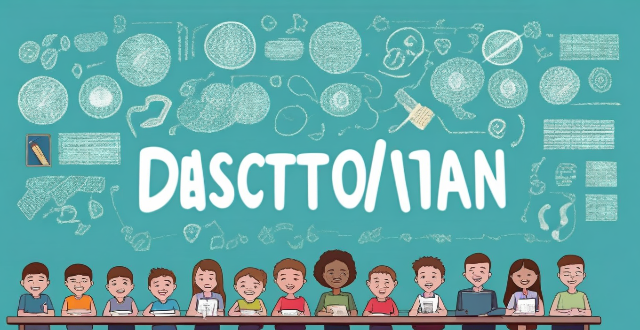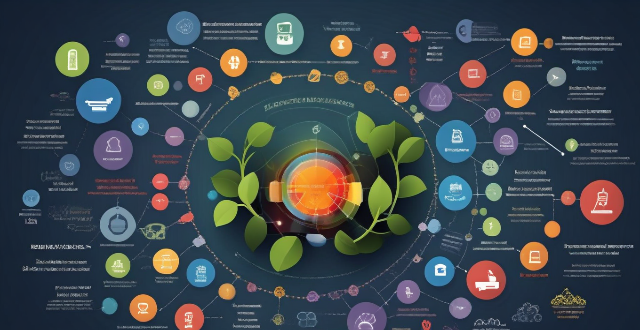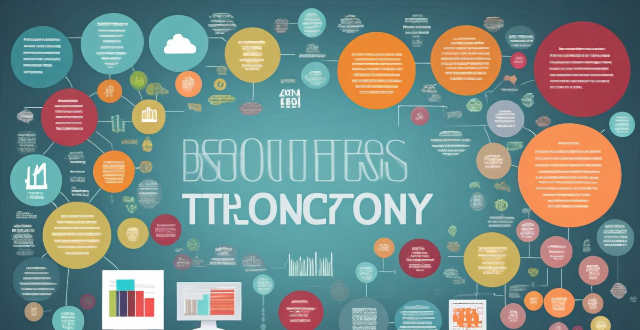Parent Collaboration

What are the benefits of parent-teacher collaboration in education ?
The article discusses the importance of parent-teacher collaboration in education. It mentions that such collaboration can lead to improved student performance, increased student motivation, enhanced parental involvement, improved classroom management, and greater access to resources. Overall, it emphasizes the significance of parents and teachers working together to create a supportive learning environment for students.

What are some common challenges that arise in parent-teacher collaboration, and how can they be overcome ?
Common challenges in parent-teacher collaboration include lack of communication, time constraints, cultural differences, resistance to change, unclear roles and responsibilities, conflicting priorities, lack of trust, inconsistent messages, limited access to information, and emotional barriers. To overcome these challenges, strategies such as improving communication, addressing time constraints, bridging cultural differences, embracing change, clarifying roles and responsibilities, building trust, facilitating access to information, and addressing emotional barriers can be implemented. By employing these strategies, parents and teachers can work together more effectively to support student success while overcoming common challenges in their collaboration.

What strategies can be used to promote parent-teacher collaboration in schools ?
Promoting parent-teacher collaboration in schools is crucial for student success and well-being. Strategies include open communication, involvement opportunities, parent education, shared responsibility, technology integration, and celebrating diversity. Regular updates, volunteer programs, workshops, home-school agreements, online portals, and multicultural events are among the tactics that can foster a strong partnership between parents and teachers.

What is the importance of building a strong parent-teacher relationship in supporting student learning ?
The Importance of Building a Strong Parent-Teacher Relationship in Supporting Student Learning Building a strong parent-teacher relationship is crucial for supporting student learning. This partnership between parents and teachers can have a significant impact on a child's academic success, social development, and overall well-being. A strong parent-teacher relationship fosters open and effective communication channels, creates a supportive learning environment, promotes shared responsibility for a student's education, and cultivates positive attitudes toward education. By working together, parents and teachers can help students reach their full potential and prepare them for success in all aspects of life.

What are some fun and engaging parent-child activities ?
The text provides a list of fun and engaging parent-child activities that can strengthen the bond between parents and children while promoting creativity, physical fitness, teamwork, and learning. The activities are categorized into six main topics: arts and crafts, outdoor adventures, sports and games, cooking and baking, educational activities, and music and dance. Each topic is further divided into subtopics with specific activities that families can enjoy together. For example, under arts and crafts, families can set up an art station for painting and drawing or make paper crafts like origami figures. Under outdoor adventures, families can explore nature trails or plan camping trips. The text emphasizes the importance of finding activities that both parents and children enjoy and can participate in together.

What are the benefits of participating in parent-child activities together ?
Participating in parent-child activities together offers numerous benefits, including improved communication, stronger emotional connections, physical health benefits, cognitive development, social skills development, and the creation of lifelong memories. By engaging in these activities, families can strengthen their relationships, improve communication, and create lasting memories that will be cherished for years to come.

Is there any collaboration in the singer's new album ?
The singer's new album features several collaborations with other artists, including Artist Name 1 on "Song Title", Artist Name 2 on "Song Title", and Artist Name 3 on "Song Title". These collaborations add depth and variety to the album, showcasing the singer's versatility and ability to work well with different genres and styles.

How can parents and teachers effectively collaborate to support student learning ?
Effective parent-teacher collaboration requires open communication, shared goals, consistent expectations, and supportive resources. By working together, parents and teachers can create a positive learning environment that fosters academic success and personal growth for students.

What role does technology play in modern home education ?
Technology has revolutionized modern home education by providing enhanced learning opportunities, personalized experiences, and facilitating parent-child collaboration. Online courses, educational apps, virtual reality, adaptive learning software, interactive whiteboards, and gamification are just some of the tools used to create engaging and effective learning environments. Additionally, video conferencing, online communities, and digital portfolios help parents stay connected and involved in their child's education. Technology will continue to play a significant role in shaping home education practices in the future.

Can parents take out loans for their children's education ?
The article discusses the options available for parents who want to take out loans for their children's education. These options include federal student loans, private student loans, and parent loans. Federal student loans offer low interest rates and flexible repayment terms, while private student loans have higher interest rates but more flexible repayment options. Parent loans are specifically designed for parents who want to help their children pay for college. The article emphasizes the importance of carefully considering all options before choosing the best one that suits the parents' financial situation and goals.

How can parents encourage and support their children's academic motivation ?
Academic motivation is a crucial factor in a child's educational journey. Here are some tips on how parents can encourage and support their children's academic motivation: 1. Set goals and expectations by discussing interests and strengths, creating a plan, and providing regular feedback. 2. Create a conducive learning environment by providing a quiet study space, minimizing distractions, and encouraging breaks and physical activity. 3. Offer encouragement and praise by acknowledging efforts and achievements, praising hard work and dedication, and celebrating successes. 4. Be involved in their education by attending parent-teacher conferences, showing interest in their studies, and helping with homework when needed. 5. Model good study habits by demonstrating a positive attitude towards learning, practicing time management and organization skills, and showing perseverance and resilience when faced with challenges.

How can parents and teachers work together to address behavioral issues in the classroom ?
This text discusses the importance of collaboration between parents and teachers in addressing behavioral issues in the classroom. It emphasizes the impact of behavior on a student's academic performance, social interactions, and overall well-being, and suggests strategies for effective communication, positive reinforcement, clear expectations, differentiated interventions, and home-school collaboration. The roles and responsibilities of teachers, parents, and students are also outlined, along with challenges and solutions to overcome communication barriers, deal with resistant parties, and address complex behavioral issues. Case studies and examples are provided to illustrate successful interventions and common pitfalls, emphasizing the importance of continuous evaluation and improvement. The conclusion recaps key points and calls for active participation and ongoing support from both parents and teachers to effectively address behavioral issues in the classroom.

What role could international cooperation play in the development of a lunar base ?
International cooperation is vital for lunar base development, allowing cost sharing, resource optimization, innovation collaboration, risk mitigation, comprehensive data sets, research collaboration, diverse perspectives, joint missions, diplomatic ties, global leadership, cross-cultural learning, global community building, harmonized regulations, emergency response planning, environmental impact discussions, and long-term maintenance plans.

What role should parents play in their child's education, and how can they partner with teachers to achieve success ?
The article emphasizes the significant role of parents in their children's education. Parents are crucial in creating a supportive home environment, encouraging independence and responsibility, staying involved in their child's education, and partnering with teachers. By doing so, parents can help ensure their child's academic success.

How can parents and teachers work together to promote academic achievement and success for all students ?
Parents and teachers play a crucial role in the academic success of students. By working together, they can create an environment that encourages learning, growth, and achievement. Here are some ways parents and teachers can collaborate to promote academic success: 1. Open Communication: Maintaining open and regular communication is essential. Teachers should provide updates on students' progress, challenges, and achievements. Likewise, parents should share any concerns or observations about their child's learning and behavior. 2. Supportive Home Environment: Parents should create a conducive home environment for learning by providing a quiet study space, setting a routine for homework and reading, and encouraging curiosity and exploration. 3. Partnership in Education: Both parents and teachers share the responsibility of educating students. Parents should support what teachers do in the classroom by reinforcing skills at home and ensuring that homework is completed. 4. Encourage Involvement in School Activities: Parents can volunteer at school events or participate in parent-teacher organizations. This not only helps the school but also gives parents insight into the educational process. 5. Promote a Positive Attitude Towards Learning: Celebrate effort and progress rather than just focusing on grades. This encourages a growth mindset and fosters a love for learning.

How do remote education platforms facilitate collaboration among students ?
Remote education platforms offer various features to facilitate collaboration among students, including real-time interaction through instant messaging and video conferencing, shared workspaces with collaborative documents and visual aids, group project management with task assignment and tracking, discussion forums for asynchronous discussions and idea exchange, multimedia sharing and interactive learning tools, and feedback and assessment mechanisms for peer review and group performance metrics. These tools enhance the educational experience by promoting interaction and cooperation among peers, regardless of geographical boundaries.

How can parents and teachers work together to support students with special needs ?
Supporting students with special needs is a collaborative effort between parents and teachers. Here are some ways they can work together: 1. **Establish Open Communication** through regular meetings, clear communication, and active listening. 2. **Develop a Shared Vision** with common goals, individualized plans, and flexibility. 3. **Provide Consistent Support** by maintaining consistent routines, using collaborative teaching strategies, and assisting with homework. 4. **Encourage Inclusivity** in classrooms, peer mentoring programs, and accessibility. 5. **Share Resources and Best Practices** through professional development, parent workshops, and networking. 6. **Monitor Progress and Adjust Strategies** by collecting data, creating a feedback loop, and being adaptable.

Can participating in team sports boost morale and collaboration among coworkers ?
Participating in team sports can boost morale and collaboration among coworkers by improving communication, increasing trust and respect, enhancing problem-solving skills, and promoting teamwork.

How can parents support educational equity for their children ?
Educational equity is a fundamental principle that ensures all children, regardless of their backgrounds, have equal access to quality education. As parents, supporting educational equity can make a significant difference in your child's learning journey and the community at large. Here are some ways you can contribute: 1. Advocate for equal resources by engaging with school administration and supporting funding initiatives. 2. Foster inclusivity at home by educating yourself and your child about diversity and promoting empathy. 3. Provide equal opportunities at home by creating a learning environment and encouraging extracurricular activities. 4. Collaborate with other parents by building networks and working together on school projects. 5. Stay informed and up-to-date by reading educational literature and attending workshops, as well as using technology wisely to leverage online resources and monitor progress.

How can parents balance work and home teaching strategies for their children ?
Parenting in the modern era is a challenging task, especially when it comes to balancing work responsibilities with home teaching strategies for children. Here are some tips: - Set priorities by identifying what is most important and allocating time accordingly. - Create a routine that provides structure and predictability for both parents and children. - Utilize technology as a tool for supplementing learning outside of traditional school hours. - Involve children in household chores to teach them valuable life skills while also freeing up more time for parents. - Seek support from others such as grandparents, babysitters, or other family members who are willing to lend a hand.

What are the different types of preschool programs available ?
Preschool programs are designed to prepare young children for kindergarten and beyond. There are several types of preschool programs available, each with its own unique approach and focus. The most common types of preschool programs include Montessori, Waldorf, Reggio Emilia, High Scope, Play-Based, Head Start, and Co-op/Parent Participation. Each program has its own key features and benefits. When choosing a preschool program for your child, it's essential to consider your family's needs, values, and preferences to find the best fit for your little one's early education journey.

How can technology support climate governance efforts ?
Technology significantly aids climate governance by enhancing monitoring, data analysis, and collaboration. Satellite imagery and remote sensing provide detailed environmental insights, while sensor networks offer real-time data collection for precise agriculture and environmental monitoring. AI and machine learning enable pattern recognition and optimization models for energy efficiency. Climate models help predict future scenarios and assess risks. Digital platforms foster global collaboration, while e-learning resources and social media campaigns raise awareness. Smart regulation systems and crowdsourcing platforms aid policy formulation and public participation in climate governance efforts.

How has technology impacted international cooperation in recent years ?
The text discusses the impact of technology on international cooperation in various sectors such as communication, collaboration tools, access to information, globalization of trade and commerce, and environmental sustainability. Technology has improved communication through instant messaging, social media, and email, enhanced collaboration tools like project management software and video conferencing, increased access to information with open source data and online news sources, globalized trade and commerce through e-commerce platforms and digital payment systems, and promoted environmental sustainability with climate modeling and renewable energy technologies. Overall, technology has had a significant positive impact on international cooperation.

How do family-friendly events help in building a strong relationship between parents and children ?
Family-friendly events play a crucial role in fostering strong relationships between parents and children. These events provide opportunities for families to spend quality time together, engage in fun activities, and create lasting memories. In this article, we will discuss how family-friendly events can help build a strong relationship between parents and children. One of the primary benefits of family-friendly events is that they enhance communication between parents and children. During these events, families have the chance to talk about their interests, share experiences, and learn new things together. This open communication helps to build trust and understanding within the family unit. Family-friendly events offer a structured environment where parents and children can spend quality time together without distractions. This dedicated time allows families to reconnect and strengthen their bonds. Family-friendly events often feature a variety of activities that cater to different age groups and interests. This exposure to new experiences can help children develop new skills and hobbies, while also allowing parents to discover hidden talents or interests within themselves. The memories created during family-friendly events are invaluable in building strong relationships between parents and children. These experiences become cherished moments that families look back on fondly, reinforcing the importance of spending time together. Family-friendly events also offer opportunities for parents and children to develop empathy and understanding towards one another. By observing each other's reactions and emotions during these events, families can gain insights into each other's perspectives and feelings.

How can I build a strong relationship with my investors ?
The article emphasizes the importance of building a strong relationship with investors for the success of a business. It outlines several key strategies to achieve this, including communication, trustworthiness, collaboration, recognition, professionalism, and continuous improvement. The tips provided suggest that regular updates, transparency, active listening, fulfilling promises, integrity, partnership approach, joint decision making, appreciation, acknowledgement of success, punctuality, high-quality presentation materials, seeking learning opportunities, and creating a feedback loop are all crucial elements in fostering a positive relationship with investors. By following these guidelines, businesses can establish a strong foundation of trust, transparency, and collaboration that will lead to mutually beneficial relationships and ultimately contribute to the success of their ventures.

What is the role of education in raising awareness about biodiversity conservation ?
Education plays a vital role in promoting awareness and understanding of biodiversity conservation. It fosters environmental stewardship, enhances scientific literacy, develops critical thinking skills, builds empathy, informs policy decisions, fosters interdisciplinary approaches, and generates public support for conservation efforts. Actionable steps include curriculum integration, hands-on learning experiences, interdisciplinary collaboration, community outreach, lifelong learning opportunities, research support, partnerships with organizations, technology use, international collaboration, and monitoring and evaluation to ensure continuous improvement in educational programs aimed at biodiversity conservation.

How can technology and social media be leveraged to enhance student leadership experiences ?
Technology and social media can enhance student leadership experiences by providing platforms for communication, collaboration, innovation, and professional networking. Students can use instant messaging tools to improve communication skills, project management tools for better collaboration, online learning platforms for fostering innovation, and LinkedIn for building professional networks. Educators should guide students in using these tools effectively and responsibly.

What are the benefits of using a digital tool for note-taking ?
The article discusses the advantages of using digital tools for note-taking, which include increased efficiency, improved learning and retention, environmental benefits, and collaboration opportunities. Digital notes can be taken quickly, organized easily, searched efficiently, and accessed from anywhere. They also offer visual aids, audio recordings, linking capabilities, and review options that enhance learning and retention. Additionally, digital note-taking reduces paper waste, energy consumption, and physical storage needs, contributing to a more sustainable environment. Finally, digital tools facilitate collaboration by allowing note sharing, real-time editing, version control, and feedback mechanisms. Overall, digital note-taking is an optimal choice for students, professionals, and anyone looking to optimize their note-taking experience.

What are the benefits and risks of co-sleeping with your baby ?
Co-sleeping with your baby can promote bonding, ease breastfeeding, regulate sleep, reduce SIDS risk, and encourage restful sleep for parents. However, it also carries risks such as increased SIDS risk in unsafe conditions, chance of rolling over, disrupted sleep for parents, difficulty in establishing independent sleep, and potential for dependency. Safety should be the top priority when considering co-sleeping.